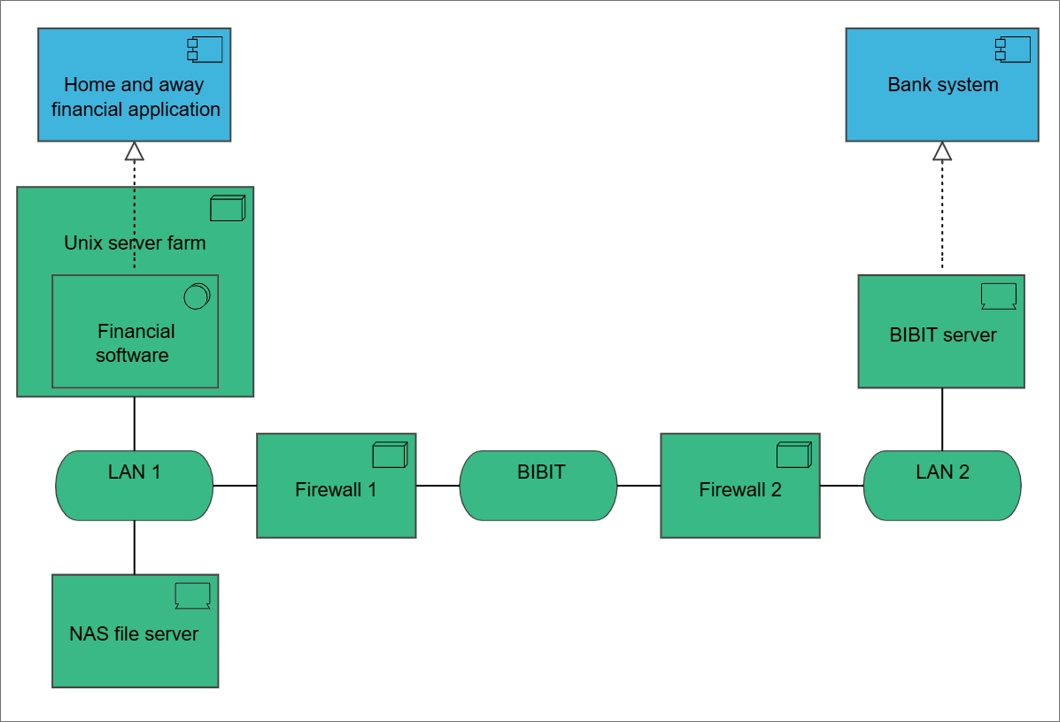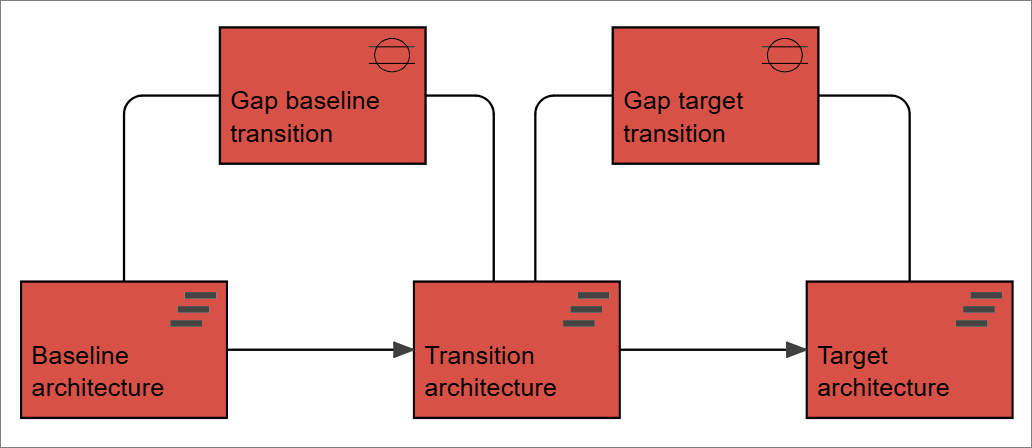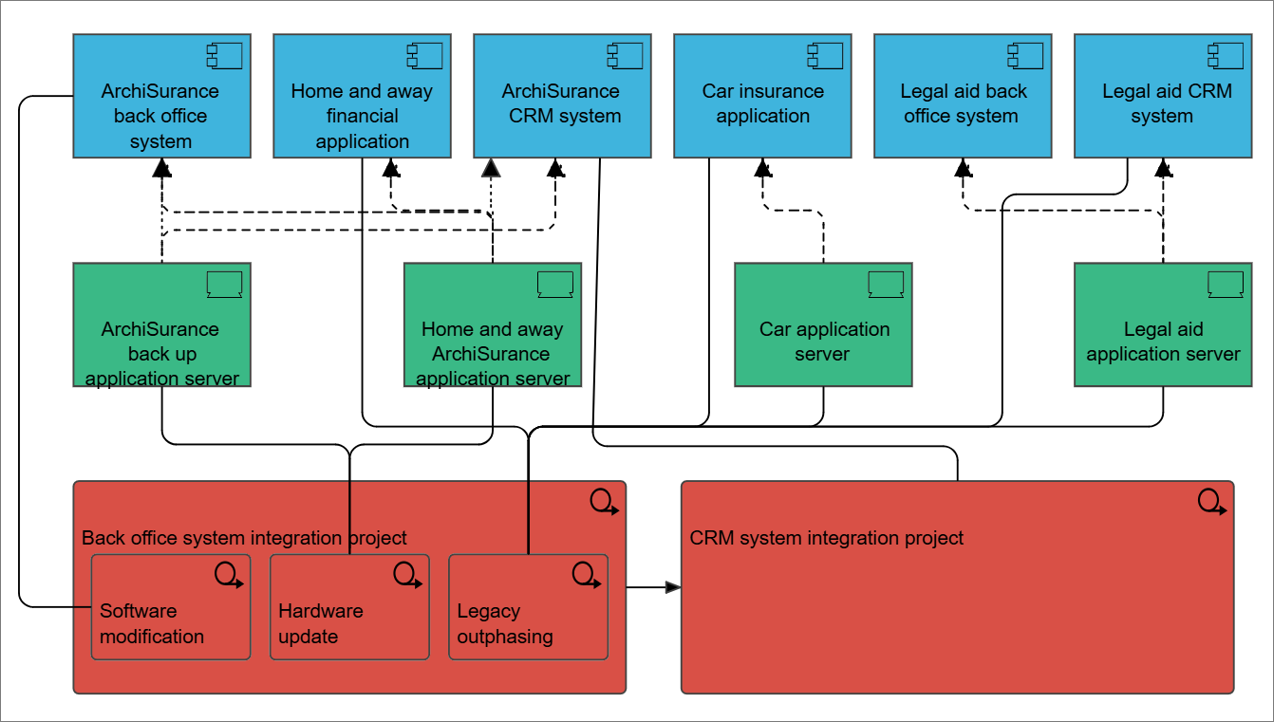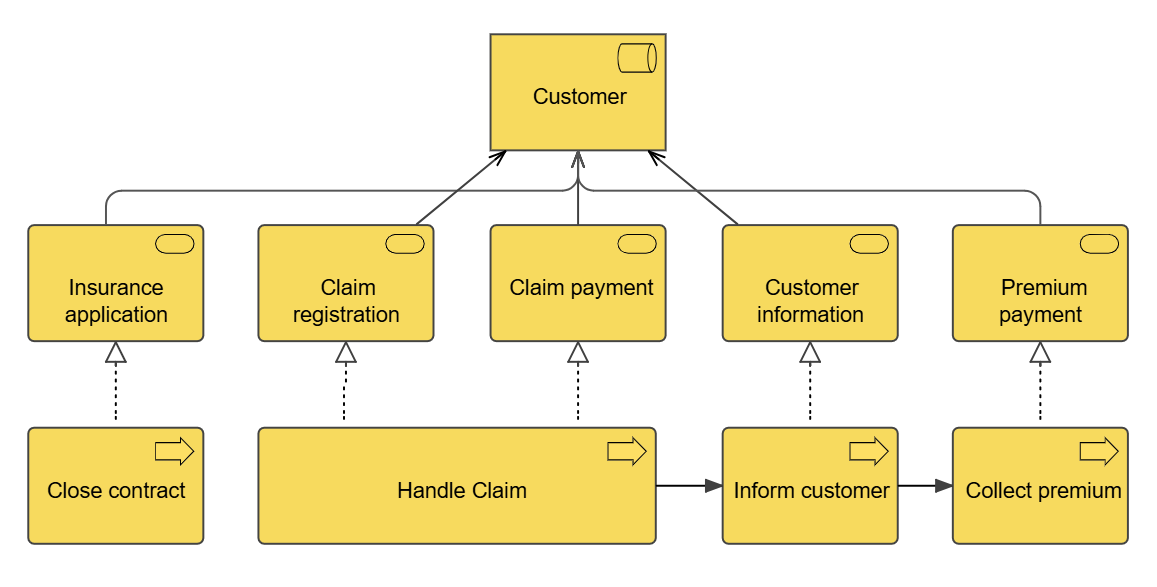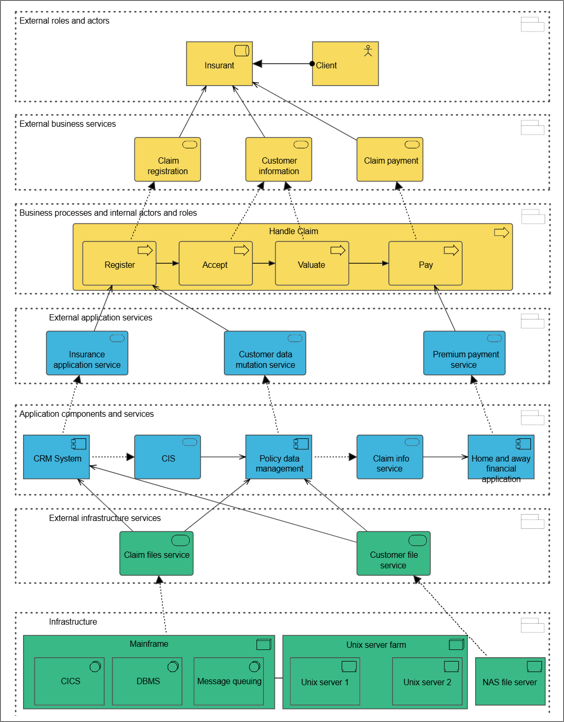Concerns: Structure of application platforms and how they relate to supporting technology
Purpose: Designing, deciding
Scope: Multiple layer/Multiple aspect
The implementation and deployment viewpoint shows how one or more applications are realized on the infrastructure. This comprises the mapping of applications and components onto artifacts, and the mapping of the information used by these applications and components onto the underlying storage infrastructure.
